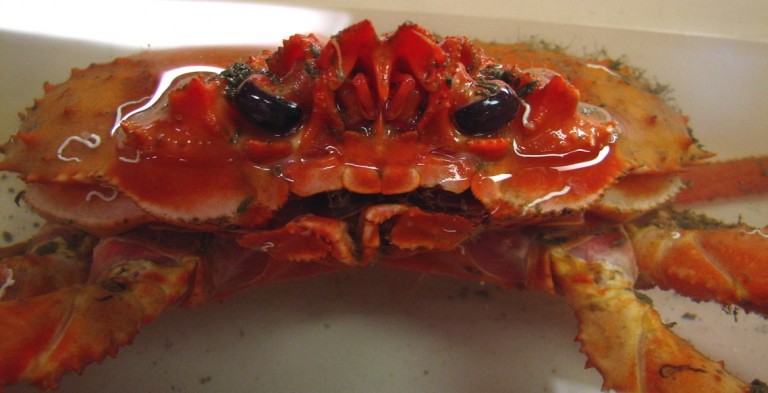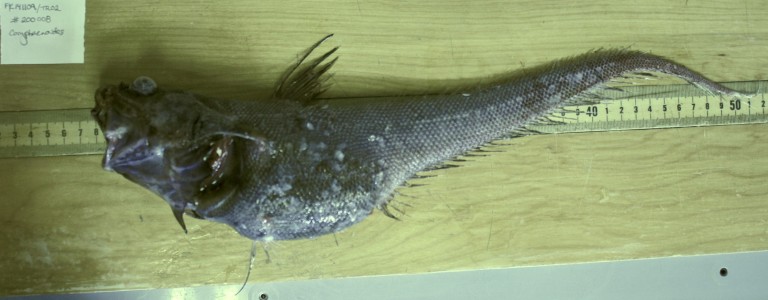
One hundred adult elephants standing on your head. That is about the weight you would feel at the bottom of the Mariana Trench from nearly 11,000 m (7 miles) of water above!
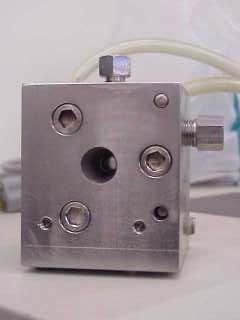
Water’s weight creates pressure (more properly, hydrostatic pressure), one of the most important factors affecting deep-sea life. Pressure increases by 1 atmosphere (atm) for every 10 m (33 ft) of depth, from 1 atm at the surface to about 1,100 atm. That is pretty stressful, but not in the way that most people think. Yes, high pressure crushes chambers with air, such as lungs and fish swimbladders, but water itself is not compressed much by pressure, and most life in the deep does not have any air spaces. However, pressure does affect all life in another way: it can distort the complex structures of biomolecules — DNA, membranes, proteins— upon which all life depends. Consider proteins, which are responsible for many structures and most dynamic processes of living cells. A protein is a chain of amino acids folded into a complex 3-dimensional shape necessary for its function. You can think of pressure pushing water molecules into a protein and distorting its shape. Every organism has thousands of different proteins, each with a different shape and function. For example, a major protein of muscles is actin, which makes filaments essential for muscle contraction. Actin from a shallow fish or land animal does not form filaments properly under high pressure.
Adapting to Pressure
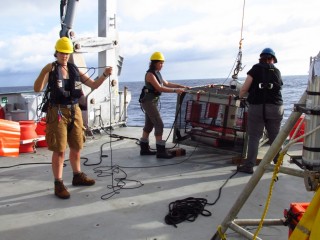
So how does life in the deep adapt? Often proteins evolve pressure-resistant structures by adaptations not yet fully understood. For example, actin from a deep-sea grenadier fish forms filaments fairly well under pressure…but not quite normally. To achieve full function, proteins may also need “piezolytes” (Greek for “pressure” and “dissolvable molecule”). These are small organic molecules originally discovered as osmolytes. Osmolytes, common in marine organisms and the focus of my laboratory, help cells hold onto water against a dehydrating agent like the high salinity of the oceans. For example, molluscs and crustaceans have high levels of the osmolyte taurine. Your own brain and kidney cells naturally accumulate taurine and other osmolytes if you get really dehydrated. We have found that some osmolytes can also help proteins fold into their proper shapes, and so they are being tested for medical and biotechnology applications. (Taurine is the main ingredient in many energy drinks.)
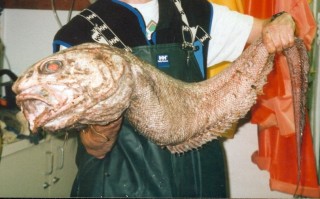
Recently we discovered that some osmolytes act as piezolytes, possibly binding water molecules tightly and preventing pressure from pushing those molecules into proteins. The first osmolyte that we found is trimethylamine oxide (TMAO), familiar to most people as the source of “fishy” smell of marine fish. TMAO is low in shallow fish, but increases with depth and pressure. By adding TMAO to proteins, such as actin from a grenadier, we find proteins work normally at high pressure.
Depth limits?

The continued mystery of scientists finding no evidence of any fish living below 8400 m even though the oceans go down to 11,000 m., may be explained by TMAO. My colleagues (Mackenzie Gerringer, Ashley Rowden, Jeff Drazen and Alan Jamieson) and I analyzed hadal snailfish from 7000 m in the Kermadec Trench and found that the highest concentration of TMAO ever recorded. This amount was so high that we predicted if a fish tried to go much deeper, it would need so much TMAO to counteract the pressure of the water that water would start flowing uncontrollably into their bodies. We still do not know of any marine fish that can cope with such a reversed osmotic water flow. So perhaps the need for TMAO as a pressure adaptation keeps fish out of the greatest depths. But, we know from previous expeditions that some animals like amphipods and holothurians (sea cucumbers) live all the way down to the trench bottoms. So how do these animals do it? Keep reading the blogs to find out more.
